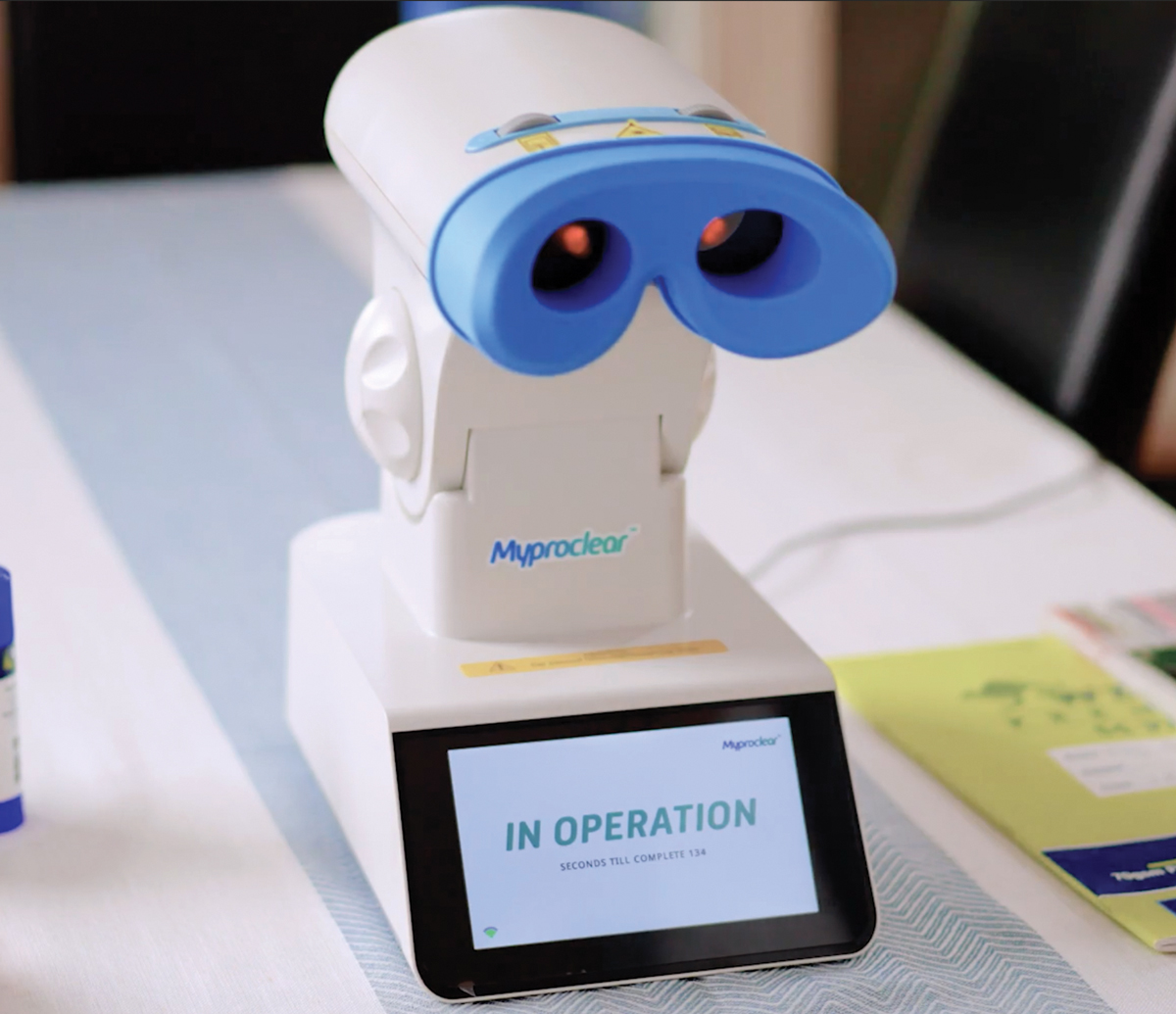 |
|
Repeated low-level red light therapy, developed by Australian company Eyerising International, is a novel treatment for myopia that’s been shown to slow axial lengthening and even reverse it in some children. Photo: Eyerising International. Click image to enlarge. |
Axial lengthening is a key characteristic of myopia that may also predispose an individual to future retinal complications such as macular hemorrhage, glaucoma, retinal detachment or cataracts. Treatments aimed at slowing axial lengthening such as low-dose atropine drops and increased time spent outdoors are currently being investigated.
Another promising treatment on the horizon is repeated low-level red light (RLRL) therapy. This novel therapy, available internationally but not yet in the US, was found to not only reduce myopia progression and axial lengthening but also shorten axial length in some kids. This unexpected finding was first reported in a randomized multicenter study in Chinese children in 2022.1 Following that, researchers conducted an additional study to assess the effect of RLRL therapy in a clinical setting and find out which factors were associated with axial length shortening in certain children.2 While further studies are needed, the researchers observed greater axial length shortening among younger children who had longer baseline axial lengths.
This retrospective clinical study included 434 myopic children between the ages of three and 17 (mean age: 9.7) who had undergone RLRL therapy for at least a year using a home-use desktop light device that emitted 650nm wavelengths. Primary outcomes were frequency of axial length shortening and associated factors.
The researchers reported that 26.5% of children experienced axial length shortening at the 0.0 mm/year cutoff, 17.51% at the 0.10mm/year cutoff and 4.61% at the 0.20mm/year cutoff. They also noted significant associations between axial length shortening and younger baseline age, female sex and longer baseline axial length or greater spherical equivalent refraction. Among those who experienced axial length shortening, the mean difference in axial length was -0.142mm/year.
“More than a quarter of children experienced axial length shortening following at least 12 months of RLRL therapy in this multicenter cohort,” the researchers wrote in their paper. “Therefore, RLRL therapy is a proven practical and effective treatment for managing axial length elongation and preventing vision-threatening complications that has applications to clinical practice.”
1. Jiang Y, Zhu Z, Tan X, et al. Effect of repeated low-level red-light therapy for myopia control in children: a multicenter randomized controlled trial. Ophthalmology. 2022;129(5):509-19. 2. Wang W, Jiang Y, Zhu Z, et al. Clinically significant axial shortening in myopic children after repeated low-level red light therapy: a retrospective multicenter analysis. Ophthalmol Ther. January 7, 2023. [Epub ahead of print]. |


